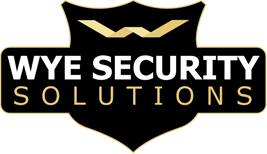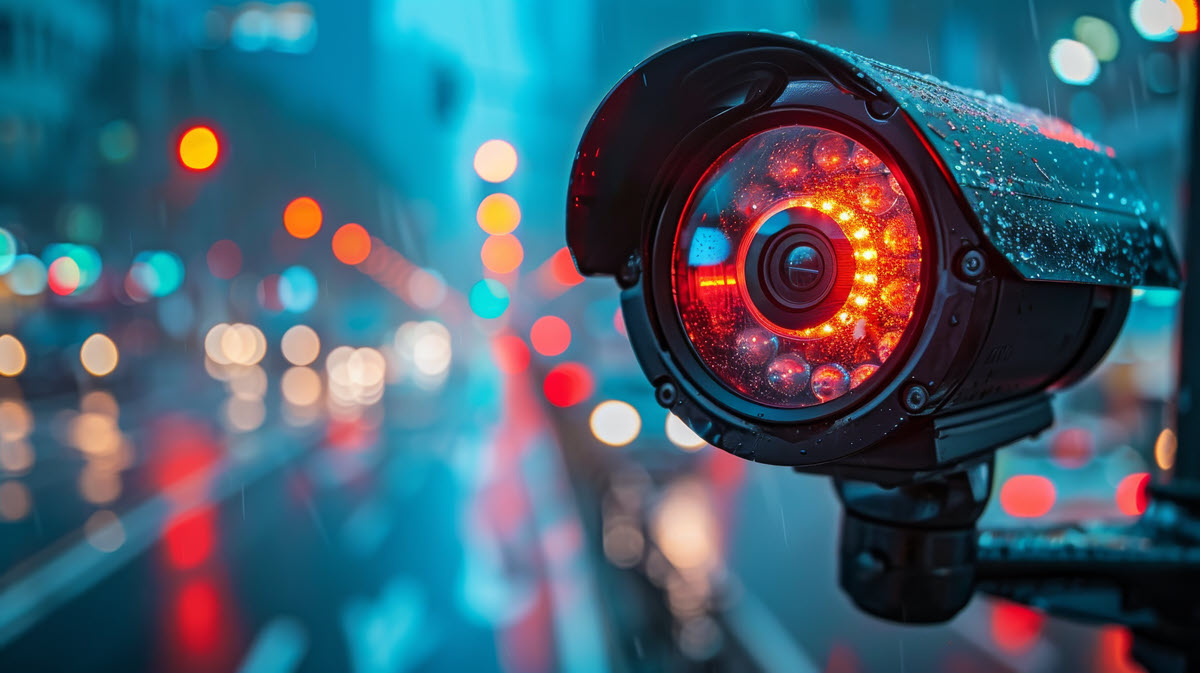In today’s rapidly evolving business landscape, the threat of theft looms large, fuelled by organized criminals, opportunistic gangs, the cost of living crisis, and sometimes, even internal actors. Thus, theft prevention has become a critical concern for many businesses, it becoming increasingly neccessary to proactively guard their physical and digital assets against unauthorized access and fraud.
This is not just about safeguarding equipment and sensitive data; it’s about building a security-conscious culture and implementing stringent measures to deter potential perpetrators. As the digital age advances, the importance of robust theft and loss prevention strategies cannot be overstressed, protecting both tangible and intangible assets from the clutches of modern-day thieves.
Your business stands on the frontline of an ongoing battle against theft and loss. This article outlines advanced techniques to enhance your theft prevention efforts, from conducting comprehensive security risk assessments to leveraging cutting-edge surveillance technologies, this including additional physical security in the form of security guards, whether employed by the business or supplied by a security firm like Wye Security Solutions.
With a focus on both physical and digital security measures, you’ll learn how to fortify your premises and create an impervious shield against potential threats. By engaging and educating your workforce on essential security practices, you ensure that your business remains a step ahead in the perpetual fight against theft, thereby safeguarding your assets, reputation, and bottom line.
Conduct a Comprehensive Security Risk Assessment
Step 1: Identify and Map Your Assets
Begin by identifying all critical assets within your organization, including physical locations, IT infrastructure, data storage containers, and human resources. Create detailed asset maps that highlight all elements contributing to your attack surface. This foundational step is crucial as it allows for a thorough understanding of what needs protection.
Step 2: Assess Threats and Vulnerabilities
Conduct thorough assessments of potential threats and vulnerabilities. This involves analyzing both internal and external threats to your organization, such as cyber threats, physical breaches, and insider threats. Utilize methods like penetration testing, vulnerability scanning, and employee interviews to gather data as needed.
Step 3: Prioritize Risks
Using the information gathered, prioritize risks based on their potential impact and the likelihood of occurrence. This step should involve key stakeholders and decision-makers to ensure that all perspectives are considered. Create a risk matrix to help visualize and prioritize these risks effectively.
Step 4: Develop Security Controls
Develop and implement appropriate security controls tailored to mitigate identified risks. This may include physical security enhancements, such as manned security checkpoints, or mobile patrols, cybersecurity measures, and policy adjustments. Ensure that these controls are scalable and adaptable to changing threats.
Step 5: Document and Report
Compile the findings and recommendations into a comprehensive risk assessment report. This report should provide an executive summary that helps senior management understand the risks and make informed decisions about security investments and strategies.
Step 6: Implement and Monitor
Implement the recommended security controls and continuously monitor their effectiveness. Security is not a one-time event but an ongoing process. Regularly review and update the security measures to adapt to new threats and vulnerabilities.
Step 7: Train and Educate
Ensure that all employees are trained on the new security protocols and understand their roles in maintaining security. Ongoing education and training are vital to minimizing human error and enhancing the effectiveness of your security measures.
By following these steps, you can conduct a comprehensive security risk assessment that not only identifies and mitigates risks but also enhances the overall security posture of your organization.
Strengthen Physical Security Measures
Upgrade Locks and Doors
- Select High-Security Locks: Opt for anti-snap locks that comply with high security standards like SS312 Diamond and TS007 3 Star to prevent lock snapping, a common burglary method.
- Enhance Door Security: Install steel doors at vulnerable points such as utility or employee entrances to deter unauthorized entry. For areas requiring a less industrial look, consider solid-core wooden doors with security glass.
- Integrate Advanced Locking Mechanisms: Utilize modern technology by installing electronic locks with remote access capabilities, allowing you to control and monitor access from anywhere.
Install Security Lighting
- Optimize Placement: Ensure lights are positioned to illuminate key areas without creating shadows or glare. Use motion-activated lights to conserve energy and alert you or your cctv monitoring company to movement.
- Choose the Right Type: Employ a combination of ambient, task, and accent lighting to cover all necessary areas effectively. Consider energy-efficient LED lights to reduce operating cost.
- Integrate with Other Systems: Coordinate lighting with CCTV and alarm systems to enhance visibility and response times during incidents.
Implement CCTV Surveillance
- Select Appropriate Cameras: Use a mix of dome, bullet, and PTZ cameras to monitor various areas. Dome cameras are ideal for indoor spaces while bullet cameras work well outdoors.
- Ensure Comprehensive Coverage: Place cameras strategically to cover all entry points and vulnerable areas. Consider the field of view and camera resolution to ensure clear footage.
- Incorporate Advanced Features: Utilize IP cameras for remote monitoring and integrate video analytics to detect unusual activities automatically.
- Maintain Privacy Compliance: Be mindful of privacy laws when installing CCTV. Avoid areas like restrooms and ensure proper signage is displayed to inform all that surveillance is taking place.
Implement Advanced Access Control Systems
Electronic Entry Systems
- Keyless Entry Systems: Transitioning to keyless entry systems offers businesses enhanced security and operational efficiency. These systems utilize various authentication methods such as keypads, key fobs, and smart locks, employing technologies like Bluetooth, WiFi, or Z-Wave or remote access control .
- Smart Lock Integration: Smart locks integrated withmobile-friendly or cloud-based software provide flexibility, allowing businesses to react swiftly to security breaches. These systems can be paired with security cameras and smart alarms to fortify the security environment.
- Mobile Access Control: A mobile access control system enables remote management of settings and real-time alerts for specific events. Businesses can control door access from any location using a smartphone, enhancing convenience and security.
Biometric Access Control
- High-Level Security: Biometric systems use unique physical features like fingerprints, iris scans, or facial recognition to grant access. This method is highly secure as biometrics are unique to each individual, making unauthorized access nearly impossible, unless that is a member of staff is the perpetrator.
- Integration and Management: Modern biometric systems can be integrated with existing security frameworks, offering features like audit trails, customizable access rights, and real-time monitoring. These systems are scalable and can be managed centrally, simplifying security operations for businesses of all sizes.
- Advanced Features: Biometric access control systems often include additional security measures such as multi-factor authentication and time-based access permissions. These features ensure that access is granted only to authorized individuals at appropriate times, enhancing overall security.
Implementing advanced access control systems, including both electronic entry and biometric options, provides businesses with robust tools to prevent unauthorized access and manage security more effectively. These systems not only enhance security but also offer operational efficiencies through integration and remote management capabilities.
Develop and Enforce Strict Security Protocols
Employee Training on Security Awareness
- Comprehensive Cybersecurity Awareness: Initiate training programs that educate your employees about common cyber threats such as phishing, social engineering, and malware attacks. Emphasize secure password management, safe web browsing practices, and data handling procedures to minimize risks.
- Role-Based Training: Tailor security training programs to the specific responsibilities of different roles within your organization. This ensures that each employee receives relevant information applicable to their duties, enhancing overall security effectivenes.
- Continuous Learning and Reinforcement: Implement ongoing training sessions, refresher courses, and simulated phishing exercises to keep security top of mind. This helps in building a vigilant and proactive workforce capable of identifying and responding to threats.
- Evaluation and Improvement: Regularly assess the effectiveness of training programs through metrics such as reduced security incidents and employee feedback. Use this data to continuously refine and improve the training content.
Regular Security Audits and Drills
- Audit Planning and Objectives: Clearly define the scope and objectives of your security audits. Identify which systems, networks, and processes will be evaluated to ensure comprehensive coverage.
- Physical and Digital Security Assessment: Evaluate both physical security measures and digital systems to identify vulnerabilities. This includes checking the effectiveness of doors, locks, and surveillance systems as well as cybersecurity defences like firewalls and anti-virus software.
- Policy and Compliance Review: Examine your security policies and procedures for completeness and compliance with relevant standards such as GDPR or HIPAA. Update these documents regularly to reflect new security challenges and regulatory requirements.
- Incident Response Drills: Conduct simulated security incidents to test the responsiveness and effectiveness of your incident response plan. This helps in identifying gaps in your security strategy and provide practical experience to your security team.
- Regular Updates and Follow-Ups: After each audit, document the findings and develop an action plan to address any identified issues. Implement the necessary changes and conduct follow-up audits to ensure continuous improvement and compliance.
By integrating these protocols into your business operations, you can significantly enhance your organization’s security posture and resilience against potential threats.
Engage and Educate Your Workforce on Security Practices
Promote a Culture of Security Awareness
- Integrate Security into Organizational Culture: Security should be an integral part of your organization to achieve true resilience. Educate employees on best practices such as creating strong passwords and recognizing phishing emails, whilst not forgetting the ‘physical’ side of security, such as remembering to close and lock doors and to keep an eye out for any suspicious activity.
- Continuous Learning and Engagement: Implement an effective security awareness program that is engaging and informative, ensuring that staff understand their role in safeguarding the organization. Use real-world examples, especially if they are in the same geographic area and effected the same sort of business type.
- Leadership and Commitment: Ensure that top management endorses and actively promotes cybersecurity initiatives. This top-down approach is critical for fostering a culture where security is prioritized at all levels.
- Community and Communication: Build a security community within your organization to provide connections across different departments and promote a unified front against security threats. This helps in eliminating the “us versus them” mentality and fosters a culture of collective responsibility.
By implementing these strategies, you can engage and educate your workforce effectively in security practices, making them a critical line of defense against potential threats.
Conclusion
Throughout this article, we have explored a variety of advanced theft prevention techniques that businesses can adopt to secure their premises from both physical and digital threats. From conducting comprehensive security risk assessments to implementing cutting-edge access control systems and enhancing surveillance technologies, each measure contributes significantly to building a fortified defense against potential security breaches and the loss or damage to assets that can result.

